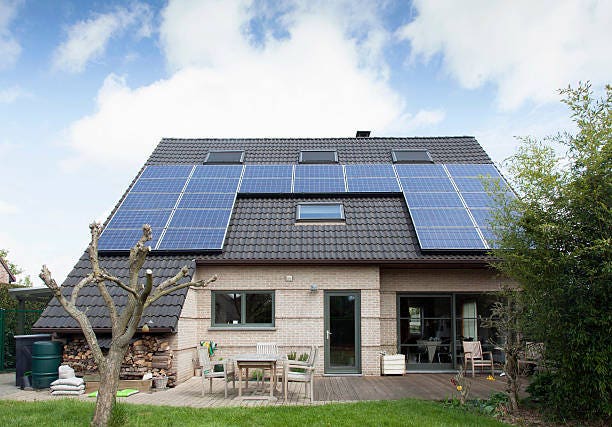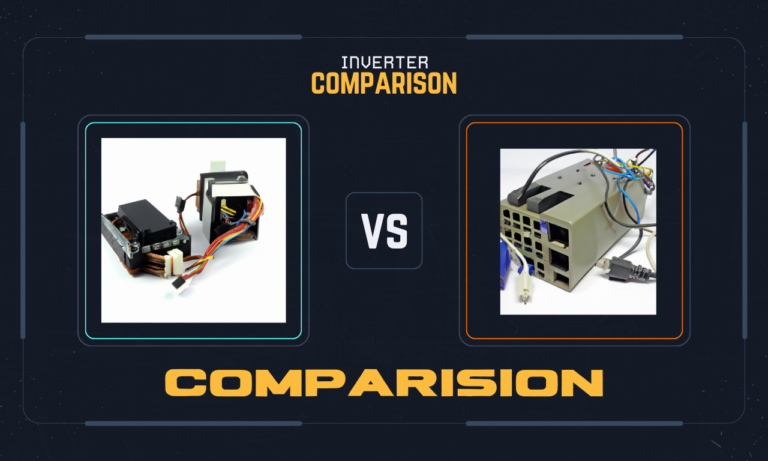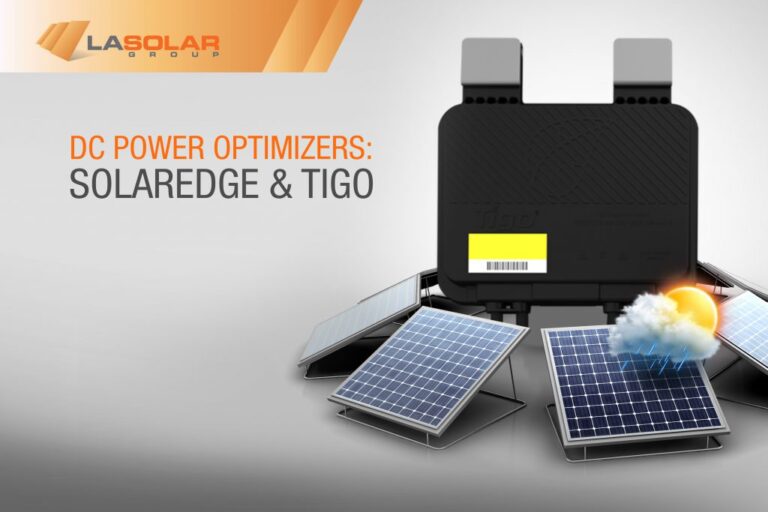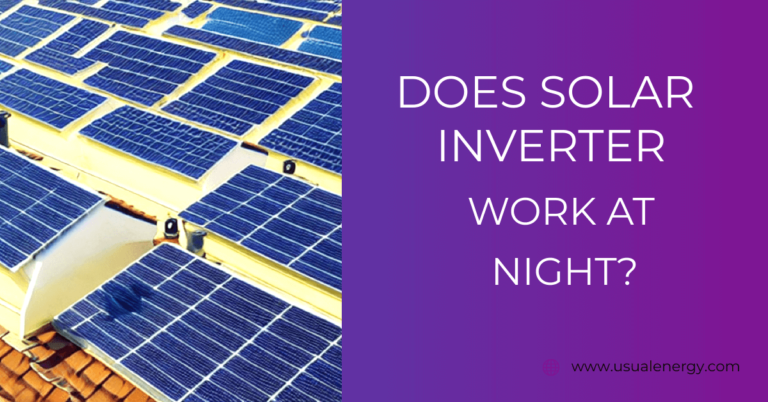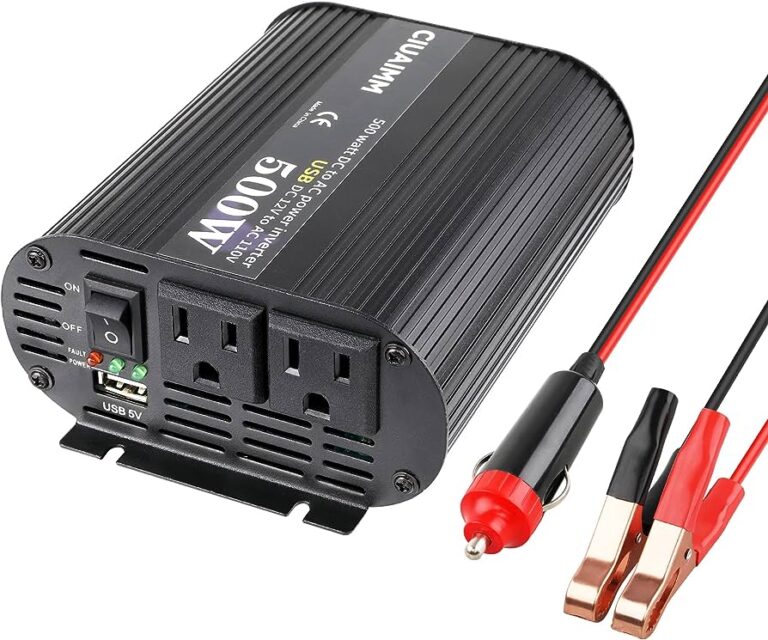Photovoltaic Shingles Vs Solar Panels: Which is the Better Investment?
Photovoltaic shingles and solar panels are both sources of clean and renewable energy, but there are important differences to consider. Photovoltaic shingles are more expensive to install, have a lower efficiency rating, and are less widely available compared to solar panels.
On the other hand, solar panels are less expensive, more efficient, and are ideal for existing roofs. Solar shingles are better suited for new constructions or when you’re replacing your roof. Despite the higher upfront cost, solar shingles may be more cost-effective in the long run due to their high efficiency and integrated design.
We will explore the pros and cons of photovoltaic shingles and solar panels to help you make an informed decision for your energy needs.
1. Understanding Photovoltaic Shingles And Solar Panels
Definition Of Photovoltaic Shingles
Photovoltaic shingles, also known as solar shingles or solar roof tiles, are designed to resemble conventional roofing materials while harnessing the power of the sun to generate electricity. These shingles are integrated into the roof of a building and consist of individual solar cells that convert sunlight into electricity.
Definition Of Solar Panels
Solar panels, on the other hand, are standalone devices that are mounted on rooftops or other structures to capture sunlight and convert it into electricity. They are composed of numerous solar cells that work collectively to generate power.
How Photovoltaic Shingles And Solar Panels Work
Both photovoltaic shingles and solar panels rely on the photovoltaic effect to convert sunlight into usable electricity. The photovoltaic effect is the process by which certain materials, such as silicon, create an electric charge when exposed to light.
Here’s a simplified breakdown of how photovoltaic shingles and solar panels work:
| Photovoltaic Shingles | Solar Panels |
|---|---|
|
|
It’s important to note that while both photovoltaic shingles and solar panels serve the same purpose of generating electricity from sunlight, the choice between the two depends on factors such as aesthetics, installation requirements, and budget considerations. Understanding the differences between these two options can help you make an informed decision that best suits your needs and preferences.
2. Cost Comparison: Photovoltaic Shingles Vs Solar Panels
Installation Costs Of Photovoltaic Shingles
When it comes to the installation costs of photovoltaic shingles, it’s important to note that they tend to be higher compared to traditional solar panels. This is primarily due to the additional labor and materials required for installing shingles as opposed to mounting panels on a roof. Photovoltaic shingles are designed to integrate seamlessly with your roofing materials, which can increase the complexity of the installation process.
Installation Costs Of Solar Panels
On the other hand, the installation costs for solar panels are generally lower when compared to photovoltaic shingles. Traditional solar panels are relatively easy to install on an existing roof, and the process doesn’t require significant modifications to the roof structure. The simplicity of installation can help reduce labor costs and make solar panels a more economical choice for homeowners.
Long-term Cost Comparison
While photovoltaic shingles may have higher installation costs upfront, they can provide long-term savings in terms of energy production. Photovoltaic shingles are designed to seamlessly blend with your roof, allowing for a more aesthetically pleasing appearance compared to traditional solar panels. This can potentially increase the value of your home and enhance its curb appeal.
Solar panels, on the other hand, may not offer the same level of aesthetic appeal as photovoltaic shingles. However, they are known for their higher efficiency in converting sunlight into electricity. This means that even though the upfront costs for solar panels may be lower, the long-term energy savings can potentially offset the initial investment.
Return On Investment (roi) Comparison
When comparing the return on investment (ROI) between photovoltaic shingles and solar panels, it’s important to consider the initial installation costs and the long-term energy savings. While photovoltaic shingles may require a bigger upfront investment, they can potentially provide a higher ROI over time due to their enhanced curb appeal and potential increase in home value.
Solar panels, on the other hand, may provide a quicker ROI due to their lower installation costs. However, it’s important to consider their lower efficiency rating compared to photovoltaic shingles. The overall ROI will depend on various factors such as the cost of electricity in your area, the amount of sunlight available, and the size of the system installed.
In conclusion, when it comes to a cost comparison between photovoltaic shingles and solar panels, it’s essential to weigh the upfront installation costs, long-term savings, and potential return on investment. Both options have their own advantages and considerations, and the choice ultimately depends on your specific needs, preferences, and budget.
3. Efficiency And Performance: Photovoltaic Shingles Vs Solar Panels
When it comes to harnessing solar energy, two popular options are photovoltaic shingles and solar panels. Both these technologies have their own advantages and disadvantages, and one major aspect that sets them apart is their efficiency and performance. In this section, we will compare the efficiency ratings of photovoltaic shingles and solar panels, as well as discuss the factors that can affect their overall efficiency and performance. Let’s dive into the details!
Efficiency Rating Of Photovoltaic Shingles
Efficiency rating is a crucial factor to consider when choosing between photovoltaic shingles and solar panels. Photovoltaic shingles, also known as solar roof shingles, have seen significant advancements in recent years. Despite the progress, their efficiency rating is still lower compared to traditional solar panels.
The efficiency rating of photovoltaic shingles typically ranges from 8% to 15%. This means that only a portion of the sunlight they receive is converted into usable electricity. However, it’s important to note that the advancements in photovoltaic shingle technology have led to improved efficiency over time.
Efficiency Rating Of Solar Panels
In comparison, solar panels have a higher efficiency rating. Traditional solar panels, also known as photovoltaic (PV) panels, have an average efficiency rating of 15% to 20%. High-end solar panels can even reach efficiency levels of 22% or more.
The higher efficiency of solar panels means that they can generate more electricity from the same amount of sunlight compared to photovoltaic shingles. This makes solar panels a more effective option for maximizing the energy output from your solar system.
Factors Affecting Efficiency And Performance
Several factors can affect the overall efficiency and performance of both photovoltaic shingles and solar panels. Here are some key factors to consider:
- Sunlight exposure: Both photovoltaic shingles and solar panels require direct sunlight to operate at their optimal efficiency. Shading, orientation, and tilt of the roof can affect the amount of sunlight reaching the solar cells.
- Roof conditions: The condition of the roof, including its material, age, and structural integrity, can impact the efficiency of photovoltaic shingles and solar panels. A sturdy and well-maintained roof can better support the installation and performance of these solar technologies.
- Climate: The climate in your area can also affect the overall performance of photovoltaic shingles and solar panels. Extreme temperatures, humidity, and weather conditions may impact their efficiency and longevity.
- Maintenance: Regular maintenance and cleaning of photovoltaic shingles and solar panels are essential to ensure optimal performance. Dust, dirt, leaves, and debris can reduce the amount of sunlight reaching the solar cells and lower their efficiency.
By considering these factors and understanding the efficiency ratings, you can make an informed decision on whether photovoltaic shingles or solar panels are the right choice for your specific needs and circumstances.
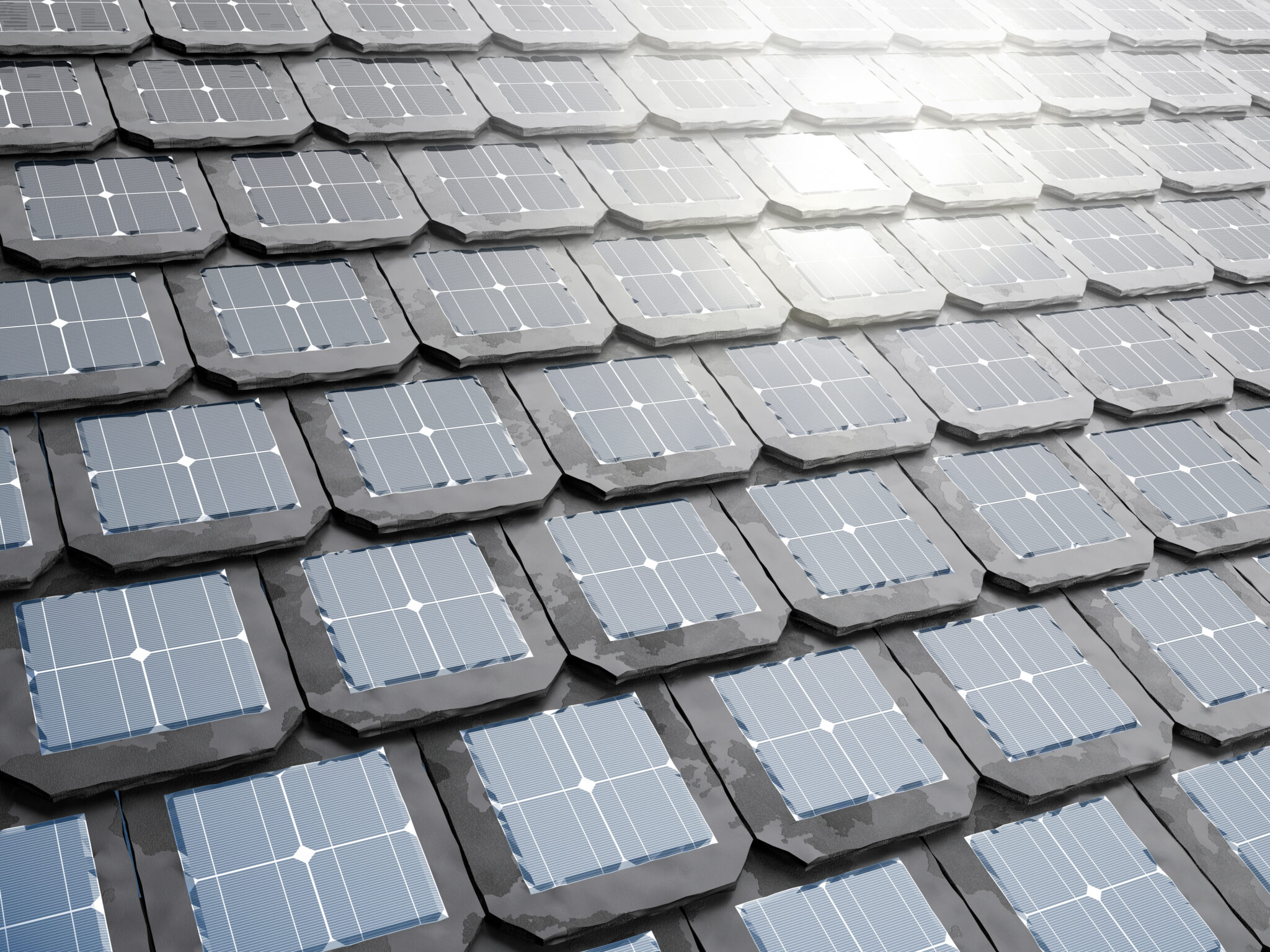
Credit: bakerhomeenergy.com
4. Availability And Suitability: Photovoltaic Shingles Vs Solar Panels
When it comes to choosing between photovoltaic shingles and solar panels for your roof, availability and suitability are crucial factors to consider. Let’s take a closer look at the availability of both photovoltaic shingles and solar panels, as well as their suitability for different types of roofs and constructions.
Availability Of Photovoltaic Shingles
Photovoltaic shingles, also known as solar shingles, are a relatively newer technology compared to solar panels. While they may not be as widely available as solar panels, their availability has been steadily increasing in recent years. Many manufacturers and suppliers now offer photovoltaic shingle options, making them more accessible to homeowners.
Availability Of Solar Panels
Solar panels, on the other hand, have been in the market for a longer time and have become more mainstream. As a result, they are generally more readily available compared to photovoltaic shingles. Numerous manufacturers and suppliers offer a wide range of solar panel options, making it easier to find a suitable one for your specific needs.
Suitability For Different Types Of Roofs And Constructions
When it comes to suitability, both photovoltaic shingles and solar panels have their advantages depending on the type of roof and construction. Solar panels are ideal for existing roofs, as they can be easily installed on top of most roof types, such as asphalt shingles, tile, and metal. Their flexibility allows for retrofitting on older roofs, making them a popular choice for homeowners looking to add solar power to their properties without replacing the entire roof.
On the other hand, photovoltaic shingles are better suited for new constructions or when you’re replacing your roof. These shingles are specifically designed to integrate seamlessly with the overall roof structure, providing a more aesthetically pleasing and uniform appearance. If you’re planning a new build or need to replace your roof soon, photovoltaic shingles can be a great option to consider, as they offer both solar power generation and protection for your home.
In terms of efficiency, solar panels generally have a higher efficiency rating compared to photovoltaic shingles. However, it’s important to note that both options can still generate a significant amount of electricity and reduce your reliance on traditional energy sources.
In conclusion, while photovoltaic shingles may have limited availability compared to solar panels, their suitability for new constructions and seamless integration with roofs make them an attractive choice. Solar panels, on the other hand, are more widely available and ideal for existing roofs. Ultimately, the choice between photovoltaic shingles and solar panels depends on your specific needs, budget, and the nature of your roofing project.
5. Pros And Cons: Photovoltaic Shingles Vs Solar Panels
When it comes to harnessing solar energy, both photovoltaic shingles and solar panels are viable options. In this section, we will explore the pros and cons of each to help you make an informed decision for your energy needs.
Pros Of Photovoltaic Shingles
- Seamless integration: Photovoltaic shingles are designed to seamlessly integrate into the design of your roof, providing a more aesthetically pleasing look compared to traditional solar panels.
- Increased property value: The addition of photovoltaic shingles can increase the value of your property, making it an attractive option for homeowners looking to invest in renewable energy.
- Easy installation: Photovoltaic shingles are relatively easy to install, especially during new roof constructions, making them a convenient option for those planning a roof replacement.
Cons Of Photovoltaic Shingles
- Higher installation costs: Photovoltaic shingles typically require professional installation, which can result in higher upfront costs compared to traditional solar panels.
- Lower efficiency rating: Photovoltaic shingles tend to have a lower efficiency rating compared to solar panels, meaning they may generate less electricity for your energy needs.
- Limited availability: Currently, photovoltaic shingles are not as widely available as solar panels, making them a less accessible option for some homeowners.
Pros Of Solar Panels
- Higher efficiency: Solar panels generally have a higher efficiency rating compared to photovoltaic shingles, allowing for greater electricity production and energy cost savings over time.
- Cost-effective: Solar panels are typically less expensive upfront compared to photovoltaic shingles, making them a more affordable option for homeowners.
- Flexible placement: Solar panels can be installed on existing roofs, giving homeowners more flexibility in utilizing solar energy without the need for roof replacements.
Cons Of Solar Panels
- Aesthetics: Solar panels can be less visually appealing compared to photovoltaic shingles, as they are typically attached to the roof’s surface.
- Existing roof requirements: Solar panels may not be suitable for all roofs due to structural limitations, shading, or other factors that may impact their effectiveness.
- Maintenance: Solar panels require regular maintenance to ensure optimal performance, including cleaning, monitoring, and occasional repairs.
Frequently Asked Questions On Photovoltaic Shingles Vs Solar Panels
Are Solar Panels Or Solar Shingles Better?
Solar panels are better than solar shingles. They are less expensive, more efficient, and ideal for existing roofs. Solar shingles are pricier, less efficient, and better suited for new constructions or roof replacements.
What Is The Cost Difference Between Solar Panels And Solar Shingles?
Solar panels are less expensive than solar shingles. Solar panels are ideal for existing roofs, while solar shingles are better suited for new constructions or roof replacements. Solar panels are more efficient than solar shingles. Solar shingles cost more than twice the price of standard solar panels.
What Are The Drawbacks Of Solar Shingles?
Solar shingles have a few drawbacks compared to solar panels. They have higher installation costs, lower efficiency ratings, and limited availability.
What Are Photovoltaic Roof Panels?
Photovoltaic roof panels, also known as PV panels, are clean and renewable energy sources. They are placed on rooftops and angled toward the sun to convert sunlight into electricity. PV panels are a more cost-effective option compared to solar shingles and are ideal for both existing roofs and new constructions.
They have higher efficiency ratings and are more widely available.
Conclusion
When it comes to choosing between photovoltaic shingles and solar panels, there are several factors to consider. While solar panels are less expensive and more efficient, solar shingles offer a more aesthetic appeal and are better suited for new constructions or roof replacements.
However, photovoltaic shingles come with higher installation costs, lower efficiency ratings, and limited availability. The decision ultimately depends on your specific needs and preferences.

